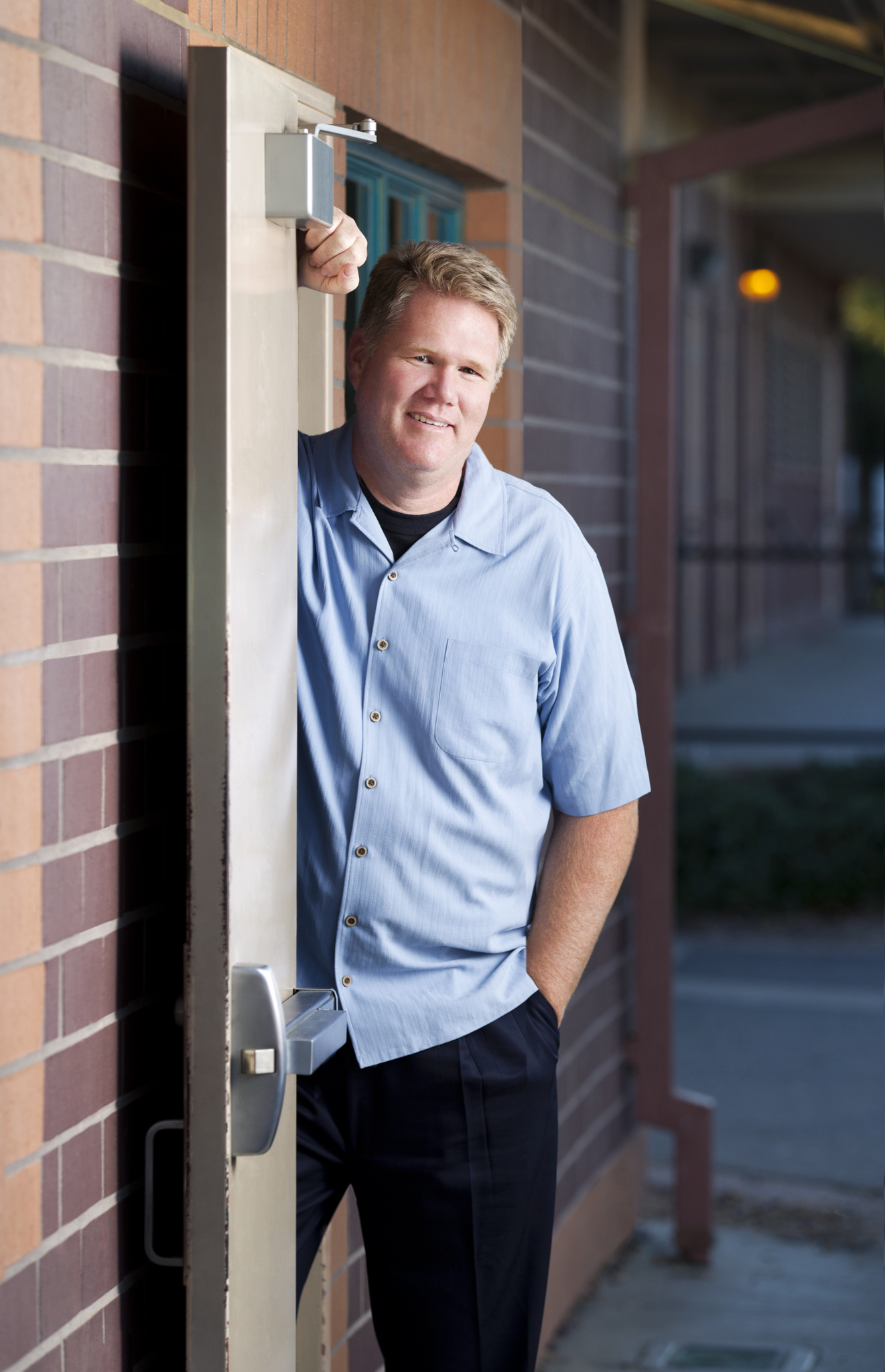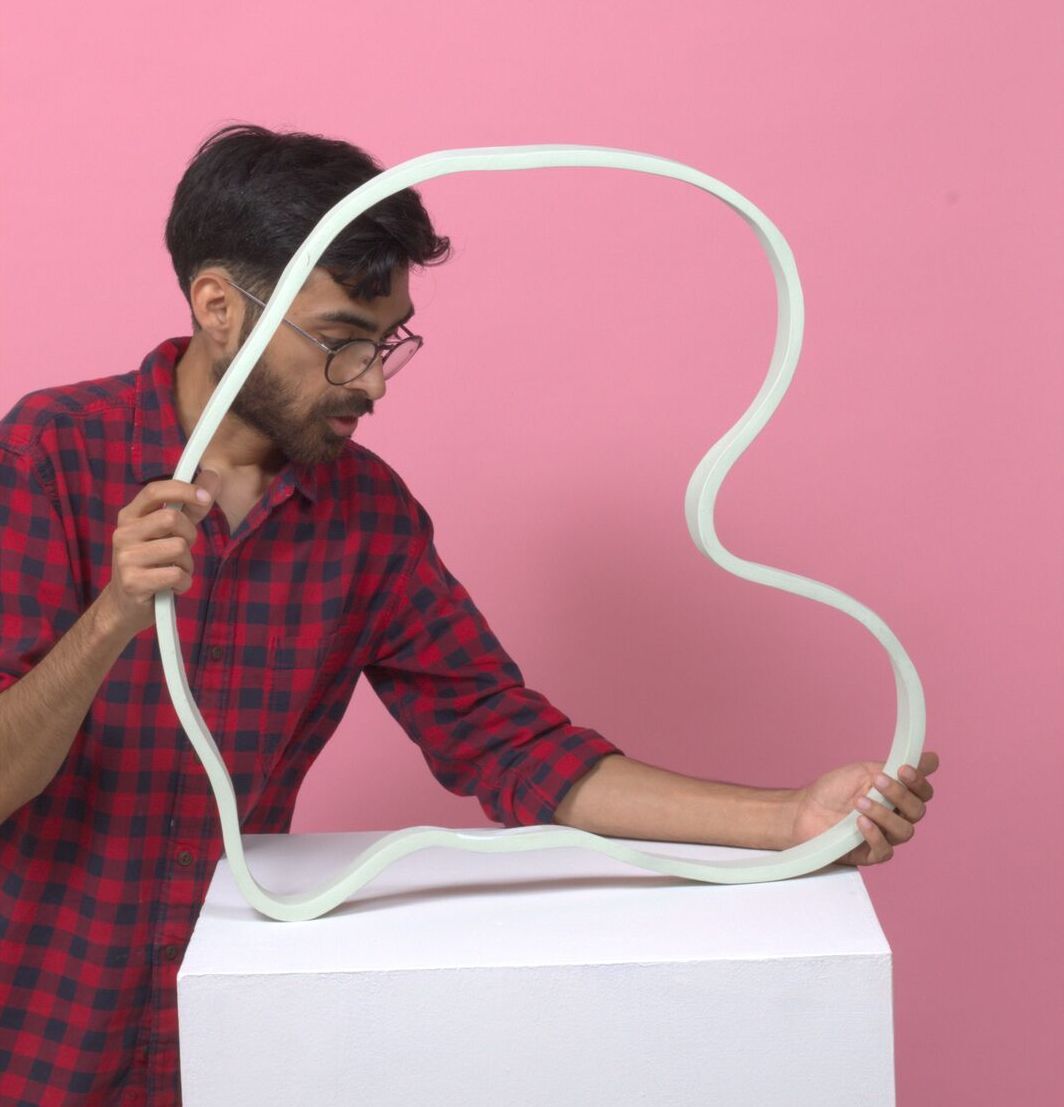Major takes students from studio to practice.

One of the toughest courses Shawn Sullivan ever took at UC Davis was an art class with Professor Lucy Puls.
“I had to prove to myself I could do it,” said Sullivan (B.A., art, ’91), who came to UC Davis in 1988 on a football scholarship. “It challenged me to know about myself, figure things out, and accept who I am.”
Several years after graduating, he stopped by to see Puls, but she wasn’t in. He left a note. When he came by a decade later, as director of K9 Studios for animation at Sheldon High School in Sacramento, she still had his note.
Those kinds of close relationships develop between students and faculty — and among students — in the undergraduate art studio program. Students work hard, often deep into the night and early morning hours, learn how to collaborate, take and give criticism, constantly move outside their comfort zones, and build confidence.
UC Davis is known for famous artists who have taught here — Wayne Thiebaud, Robert Arneson, and others — and artists who earned master of fine arts degrees, including Deborah Butterfield and Bruce Nauman. Artists are often shaped by and strongly associated with where they earned their M.F.A. Both faculty and alumni say an undergraduate art degree shapes a person holistically, regardless of whether they continue making art.
“Any art class offers so many things other than skill-based learning,” said Annabeth Rosen, co-chair of the Department of Art and Art History and Robert Arneson Endowed Chair. “It’s about developing a broad and deep understanding, finding a means to expression, and gaining confidence. Students are afforded time to develop ideas past one’s idiosyncratic nature. In art classes, students learn perceptive skills and the beginnings of critical thinking.”
Thinking like an artist
Because UC Davis is a research institution, studio art professors are engaged in research that can express itself in many ways: creating noteworthy art, exhibiting regularly, and presenting and lecturing at universities, museums, and conferences. They show students how to engage in a serious and sophisticated art practice.
“The program provided a terrific example of how to think about being an artist,” said Caetlynn Booth, (B.A., art, ’02) who creates art in Queens, New York. “There was a seriousness and intellectualism, and an environment supportive of critical thought. I learned how to not only make artwork, but learned a lot about my own motives and interests behind my studio practice.”
Oakland artist Anna Valdez (pictured at top of story) double majored in art and anthropology (B.A. ’09) and found the program was open to her cross-disciplinary interests.
“The art program was immersive in the way that I needed it to be and allowed me to access many departments,” Valdez said. “My experience echoed my desire to have a holistic approach to the visual arts.”
More than art making

“When I was at UC Davis, it was a community and people were working 24/7,” said Daniel Trejo (B.A., art and art history, ’13), who makes ceramic sculptures.
What Trejo learned in the art department and ceramics studio transferred to his job at a state agency that oversees medical facilities.
“You get the organization skills to deal with things that don’t go the way you planned,” he said. “That happens all the time in ceramics.”
Others echo this.
“Above any of the technical skills I gained in the art department, learning to take time with my thoughts and choose my words carefully have proven the most useful,” said Theo Elliott (B.A., art, ’11), director of RATIO 3 gallery in San Francisco. “The most happily employed people I know are adaptable. They listen well and can express themselves when ideas are abstract, unfamiliar, or weird.”
Emmeline Yen (B.A., art, ’12) found her calling managing art collections.
“My studies at UC Davis prepared me for the diverse art-related jobs I’ve held — teaching art, working in artist Jeff Koons’ stone studio, and registration and collections within museums,” said Yen, assistant registrar at the Los Angeles County Museum of Art. “What I valued the most from the art program was its flexibility to explore different facets of art-making, and the ability to tailor one’s course selection to fit specific interests.”
Exposure to new art and ideas led Liv Moe (B.A., art, ’05) to ask, “Why doesn’t Sacramento have this kind of art?” She became founding director of the Verge Center for the Arts in Sacramento.
“I don’t think I’d be doing this job if I hadn’t gone to UC Davis,” she said.
Challenges and friendship

The tradition continues with students like Chastine Leora Madla, a fourth-year art studio and art history double major.
“As a student you tend to undervalue your skills and your work,” she said. “(Some professors) really let you know you’re good at what you’re doing.”
The camaraderie among the students is still one of the most important parts of the program.
“You make a family,” Madla said. “We’ve seen each other grow and pushed each other to grow.”
— Jeffrey Day, content strategist in the College of Letters and Science, wrote this article for the fall 2019 issue of the College of Letters and Science Magazine.

